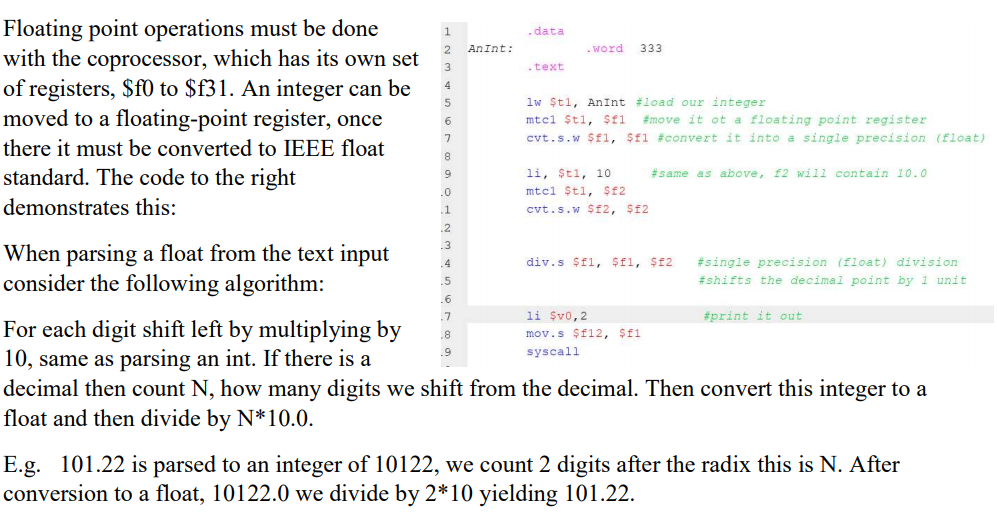Answered step by step
Verified Expert Solution
Question
1 Approved Answer
In assembly language (MIPS), create the function aTof which will parse a buffer. A parse will find a floating point number. Your program needs to
In assembly language (MIPS), create the function aTof which will parse a buffer.
A parse will find a floating point number. Your program needs to print these floats out to the screen. Copy the following between the >21.45 blah blah blah 43.0003 61 and 0.03
Some extra pointers to help:

Step by Step Solution
There are 3 Steps involved in it
Step: 1

Get Instant Access to Expert-Tailored Solutions
See step-by-step solutions with expert insights and AI powered tools for academic success
Step: 2

Step: 3

Ace Your Homework with AI
Get the answers you need in no time with our AI-driven, step-by-step assistance
Get Started


